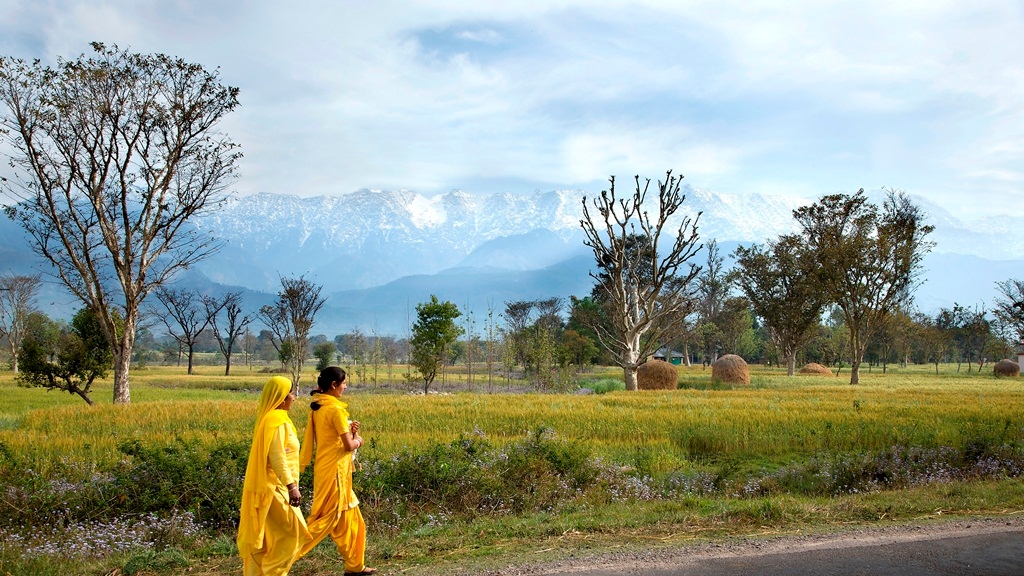Cohesive society, accountable bureaucracy, and committed leadership
While Himachal Pradesh’s special category status has made it easier for the state to access development funds, the report analyzes the reasons behind the wise investment of these resources, why these investments led to positive outcomes, and how inter-group equity was promoted. In doing so, the report serves a strong empirical demonstration for what other states and countries going through similar transitions can do to achieve social inclusion.
The report highlights the state’s unique historical and cultural context where a cohesive society together with good governance provided by an accountable bureaucracy and a trusted, ‘benevolent’ leadership has played a decisive role in driving success. The state’s commitment to expand public services to the remotest areas, together with strong community involvement and high levels of local accountability, have helped deliver services efficiently to far-flung villages across difficult terrain. Cultural factors have also led to strong women’s participation in development programs, helping the state reach high levels of sanitation, immunization and school attendance. Added to that is the low likelihood of conflict, stemming from the nature of the state’s social structure and the composition of its social groups.
The report shows that the policies adopted and the quality of their implementation can be the foremost propellers of inclusive development. For instance, land reforms in the 1950s and the 1970s laid the early foundations for social inclusion. Today, almost 80% of rural households in Himachal Pradesh own some land, and holdings across social groups are more equal than in the rest of India. This allowed even the traditionally landless communities such as the Scheduled Castes to benefit from a series of reforms and development programs in agriculture. State policies have also consistently innovated to ensure environmental sustainability, in keeping with the people’s strong traditions of environmental protection.
Will past achievements be sustained?
Going forward, Himachal Pradesh is keen to ensure that its future growth path, driven by hydropower development, watershed management, tourism, and industrial growth, does not introduce a new way of life that destabilizes its historically cohesive society and upsets social and environmental sustainability.
Among the state’s concerns are the dramatic decline in the number of girl children compared to boys, and the high level of child malnutrition. More than one third of children under the age of five were underweight in 2011, showing little improvement over 2005-06 levels, although these levels were relatively low compared to the national average.
The state is also likely to face new challenges in areas where progress has been made. For instance, it will be critical to ensure that the large cohort of educated young people, who aspire for public sector jobs, is equipped with the skills to work in future growth sectors. Added to this is the state’s rising median age which, combined with increasing urbanization, may increase the need for providing care to the elderly.
Today, urban areas in Himachal Pradesh lag behind rural areas in human development outcomes. Therefore, as urbanization levels increase, the state will have to ensure that urban growth is well-planned, enabling its residents to access key services and partake in the new economic opportunities that cities and towns have to offer.
Finally, fieldwork for the report suggests that although people welcome economic development, their support hinges on the state’s continued protection of its social and environmental heritage. Therefore, balancing the needs of growth with social and environmental sustainability will perhaps be among the greatest challenges ahead for Himachal Pradesh.
Fast Facts:
- Poverty headcount is nearly one-third the national average. Rural poverty showed an impressive fourfold decline, falling from 36.8% in 1993–94 to 8.5% in 2011, benefitting all social groups in both rural and urban areas.
- Educational attainment is among the highest in the country, particularly among excluded groups. More members of SC and ST groups have completed secondary or higher levels of schooling, both in rural and urban areas compared to other states, including southern states like Karnataka and Tamil Nadu.
- Women’s employment: The big success story is in female labor force participation which stands second in the country after Sikkim. More than 60% women in rural areas were in the labor force in 2011–12, significantly higher than the all-India average of 27% and although fewer urban women worked – 28% in 2011 – these levels were on par with Kerala and Tamil Nadu and double that of neighboring states.

